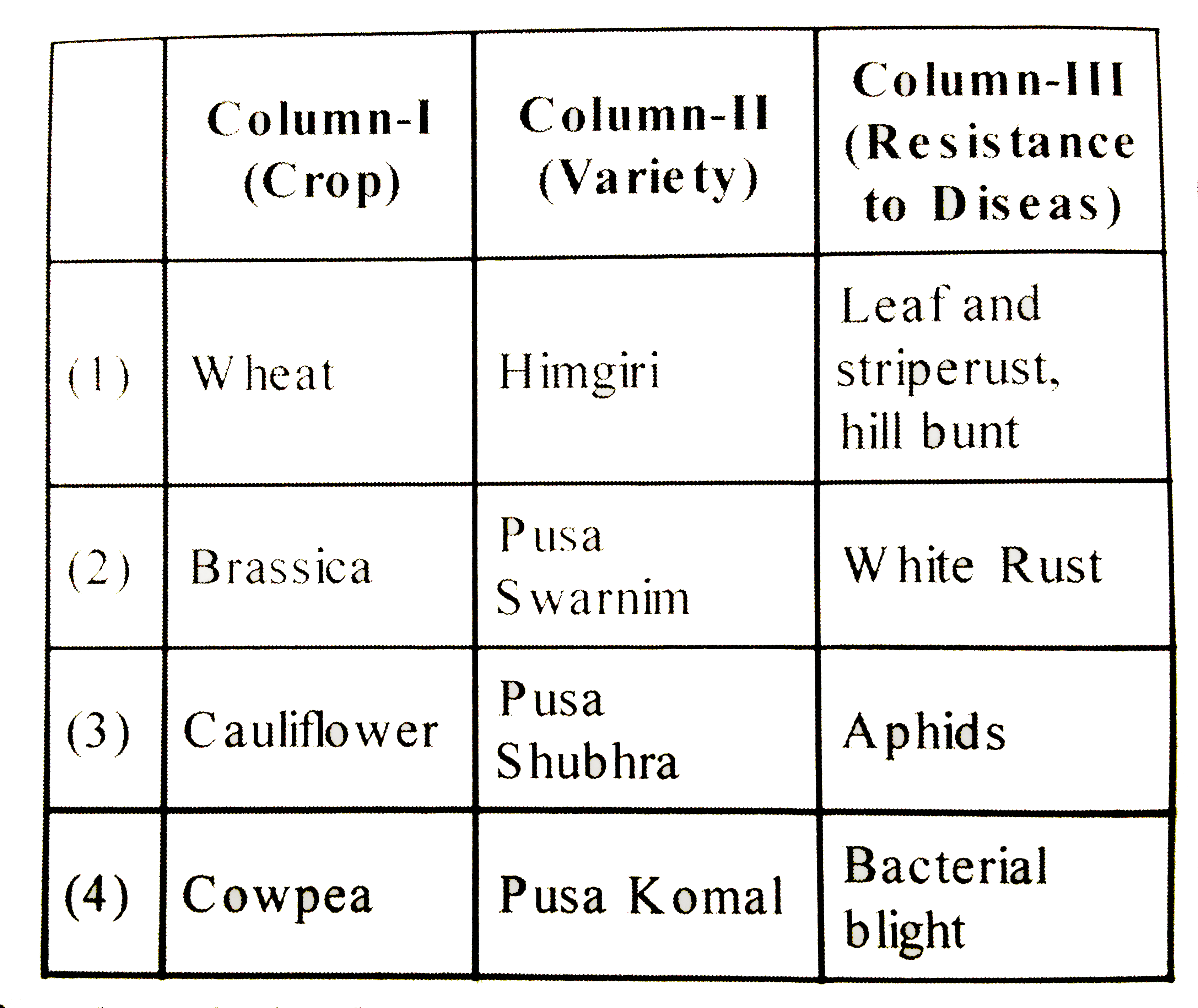Which of the following is an incorrect match ?
First product in C3 cycle , 3- Phosphoglyceric acid
Ribulose - 1, 5 - biphosphate (RuBP) : 5 carbon aldose sugar
Kranz anatomy in leaves : C4 plants
Non - cyclic photophosphorylation : Grana .
The correct Answer is:B
To solve the question of which of the following is an incorrect match, we will analyze each option provided.
1. Understand the C3 Cycle:
- The C3 cycle, also known as the Calvin cycle, is a part of photosynthesis where carbon dioxide is fixed into a stable 3-carbon compound.
- The first product formed in the C3 cycle is 3-phosphoglyceric acid (3-PGA).
Hint: Recall that the C3 cycle produces a 3-carbon compound as its first stable product.
2. Evaluate Option 1:
- Option 1 states that the first product in the C3 cycle is phosphoglyceric acid.
- Since 3-phosphoglyceric acid is indeed the first stable product, this option is correct.
Hint: Confirm the first product of the C3 cycle from your knowledge of photosynthesis.
3. Evaluate Option 2:
- Option 2 states that Ribulose-1,5-bisphosphate (RuBP) is a 5-carbon aldose sugar.
- RuBP is a 5-carbon sugar, but it is not an aldose; it is classified as a ketopentose because it contains a ketone group.
Hint: Differentiate between aldose and ketose sugars based on their functional groups.
4. Conclusion for Option 2:
- Since RuBP is incorrectly described as an aldose sugar, this makes Option 2 an incorrect match.
Hint: Remember the classification of sugars based on their carbon skeleton and functional groups.
5. Evaluate Other Options:
- Option 3 states that trans-anatomy in leaves is matched with C4 plants. This is a correct association as C4 plants exhibit specific leaf anatomy for efficient photosynthesis.
- Option 4 states that non-cyclic photophosphorylation occurs in the grana of chloroplasts, which is also correct.
Hint: Review the anatomy of C4 plants and the location of photophosphorylation in chloroplasts.
6. Final Answer:
- The only incorrect match among the options provided is Option 2: Ribulose-1,5-bisphosphate is not a 5-carbon aldose sugar but a ketopentose.
Summary:
The incorrect match is Option 2: Ribulose-1,5-bisphosphate (RuBP) is not an aldose sugar; it is a ketopentose sugar.
- The C3 cycle, also known as the Calvin cycle, is a part of photosynthesis where carbon dioxide is fixed into a stable 3-carbon compound.
- The first product formed in the C3 cycle is 3-phosphoglyceric acid (3-PGA).
- Option 1 states that the first product in the C3 cycle is phosphoglyceric acid.
- Since 3-phosphoglyceric acid is indeed the first stable product, this option is correct.
- Option 2 states that Ribulose-1,5-bisphosphate (RuBP) is a 5-carbon aldose sugar.
- RuBP is a 5-carbon sugar, but it is not an aldose; it is classified as a ketopentose because it contains a ketone group.
- Since RuBP is incorrectly described as an aldose sugar, this makes Option 2 an incorrect match.
- Option 3 states that trans-anatomy in leaves is matched with C4 plants. This is a correct association as C4 plants exhibit specific leaf anatomy for efficient photosynthesis.
- Option 4 states that non-cyclic photophosphorylation occurs in the grana of chloroplasts, which is also correct.
- The only incorrect match among the options provided is Option 2: Ribulose-1,5-bisphosphate is not a 5-carbon aldose sugar but a ketopentose.
The incorrect match is Option 2: Ribulose-1,5-bisphosphate (RuBP) is not an aldose sugar; it is a ketopentose sugar.
Topper's Solved these Questions
Similar Questions
Knowledge Check
Which of the following is a incorrect match between organism and is mode of reproduction. Organism, Mode of Reproduction
ATaenia solium FragmentationBMonocystis Multiple fissionCGonyaulax Oblique binary fissionDSyllis BuddingWhich of the following is the incorrect match ?
AMolecular solid (polar) : Dry IceBIonic solid : CaF2CMetallic solid : AgDNetwork solid : SiO2Which of the following is incorrect match?
APhysalia-portuguese man of warBMeandrina- staghorn coralCgorgonia-sea fanDPennatula-sea pen

